Underpaid and overworked, Philippine nurses would rather walk away than work at home
They are a familiar sight in hospitals round the world, yet their country faces a nursing shortage. COVID-19 has exposed a healthcare system in the Philippines that is failing its nurses, and the programme Undercover Asia looks at the issues.
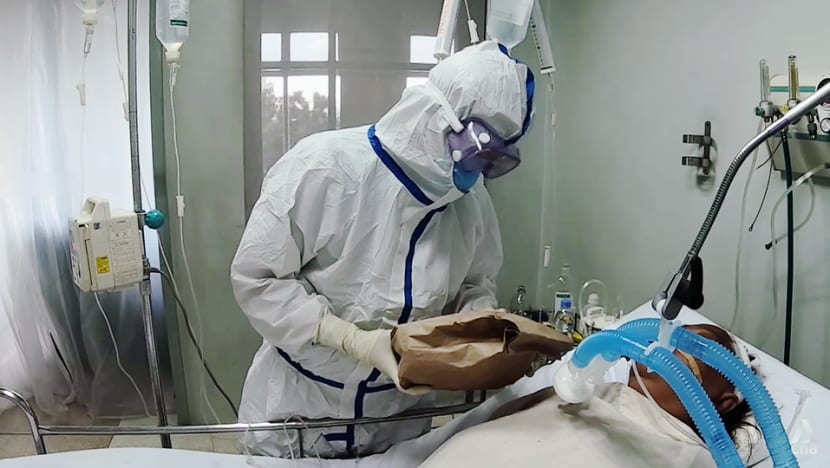
A nurse caring for a patient in a Philippine hospital.

This audio is generated by an AI tool.
MANILA: The video images are grainy, but Philippine nurse Maria Theresa Cruz stands out from her colleagues as she cheers and hugs those who have returned after recovering from COVID-19.
The contrast of her brown personal protective equipment (PPE) gown with her surroundings is a reminder that she had to buy the gown herself.
“She shared her worries and grievances because the PPE (items) were insufficient,” her daughter, Joie, said. “Even when there was PPE, it was tightly rationed.”
Two months after that video was taken, Cruz fell victim to the coronavirus. She had reported her symptoms to her employer, but was only given two rapid tests — known to be less reliable than the swab test.
Both her rapid tests were negative. The 47-year-old was given a swab test only when she developed breathing difficulties, four days after her hospital admission. She died before she could see the test result.
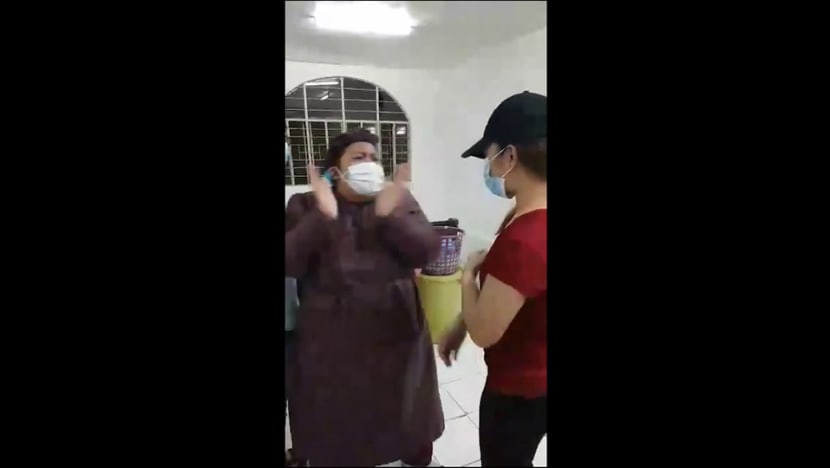
Another nurse, Pauline Budy, counts herself lucky that she survived, after spending more than six months serving in COVID-19 triage areas.
But after 14 years working in a hospital in Manila, the staff nurse earns only 630 pesos (S$17) a day, 145 pesos above the city’s minimum wage.
Nurses from the Philippines are a familiar sight in hospitals in Singapore. In fact, the Philippines is the world’s top source of nurses; nearly two in five of those who pass their nursing examinations are estimated to eventually go abroad.
But it also has the lowest number of nurses per capita in Southeast Asia, a shortage that — as the programme Undercover Asia explores — exposes a system that underpays, overworks and under-protects its nurses.

INCOME DISPARITY
Despite barely making ends meet on her part, Budy is motivated by the knowledge that she is doing meaningful work.
“We cater for the poorest of the poor,” she said. “Most of the time, they don’t have the money to buy medicine or to commute.
So from our own pockets, we try to give … although we’re also buried in debt.”
Her husband was retrenched recently, and she has had to rely on her sister to help pay most of the family’s bills. To supplement her meagre income, she has started an online business selling trinkets.
Until now, she has stayed put while nurses around her have left the Philippines for salaries that are more than 10 times what she earns.
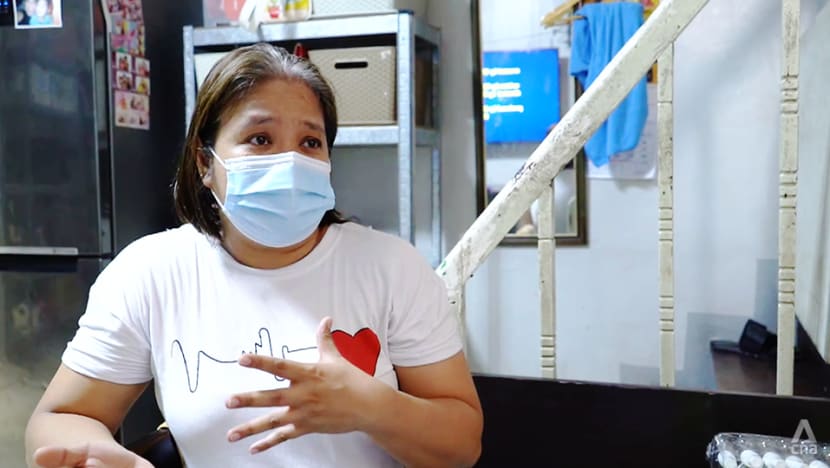
In the United Kingdom, they can earn between £1,950 (S$3,600) and £2,250 a month, according to Philippine recruitment agency Abba Personnel Services. In the United States, they can potentially earn around US$4,000 (S$5,300) to US$8,000, together with overtime pay.
Becoming a nurse is an investment of time and money in the first place.
Nursing is “one of the most expensive courses that you can ever major in” in the Philippines, said Singapore Management University sociologist Yasmin Ortiga, who has been studying nurses and migration for 10 years.
They must invest in a board exam, gain two years of experience in a Philippine hospital, and pay additional fees such as for language exams if they plan to work in certain countries, she cited.

It can take a nurse anywhere between five and 10 years to qualify for work abroad. And an estimated 13,000 nurses leave home for these jobs annually.
CONDITIONS TAKING A TOLL
There is also the fact that Philippine hospitals are understaffed. According to a national study published in 2018, as many as three out of four local government units lack health workers.
The Philippines’ average nurse to population ratio is one to 5,000. But in some geographically isolated areas, it is one to 20,000. Conditions only got worse when the pandemic hit and COVID-positive nurses needed to be quarantined.
“We projected that we’d be short-handed because the quarantine period is 14 days,” said Pretchell Tolentino, the director of the Department of Health’s Health Human Resource Development Bureau.
“So we need to add more staff to cope. … We needed triple the usual number.”
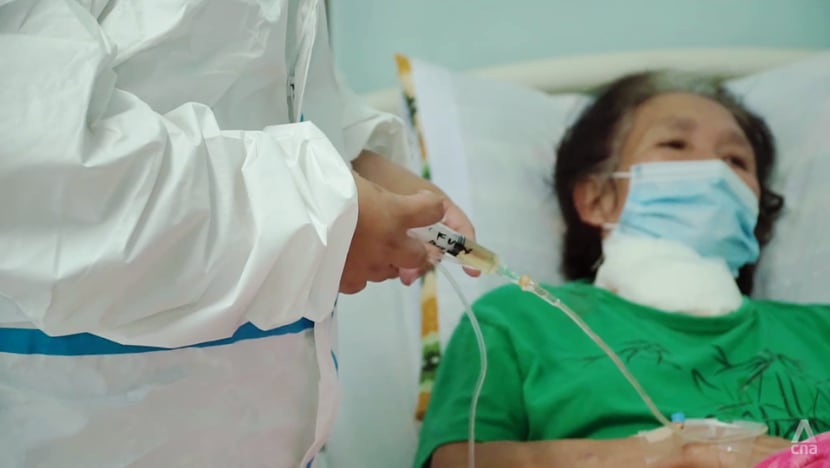
These conditions that nurses must work under amid the pandemic — with PPE items also in short supply — have taken a toll.
Last April, the World Health Organisation expressed alarm at the situation, as about 13 per cent of the country’s COVID-19 cases were healthcare workers, compared with the region’s average of two to three per cent.
A year later, 141 health workers in the Philippines have lost their lives in the line of duty, according to Department of Health statistics.
At the start of the pandemic, President Rodrigo Duterte assured front-line workers that they would be given “everything” they require to save lives, noting that about a million protective medical items were being acquired.
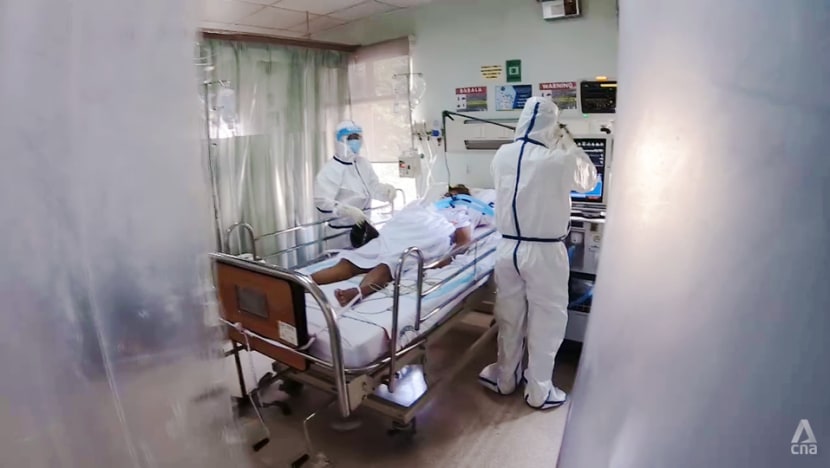
But nurses continued to work under dangerous conditions. During a focus group discussion this year with nurses from public hospitals around Manila, one of them told Undercover Asia about having to wear the same N95 mask for five days.
The lack of PPE, another nurse said, was the “biggest burden”. She could only use one set per shift, which meant trying not to eat or go to the toilet during the 12 hours in order to preserve it.
The nurses said some of them used social media to ask for donations. Others such as Cruz ended up buying their own PPE.
Cruz’s daughter has filed a case against her mother’s employer for negligence, contending that her mother may not have died if she had been diagnosed earlier and treated on time. “The lack of responsibility kills,” said the younger Cruz.
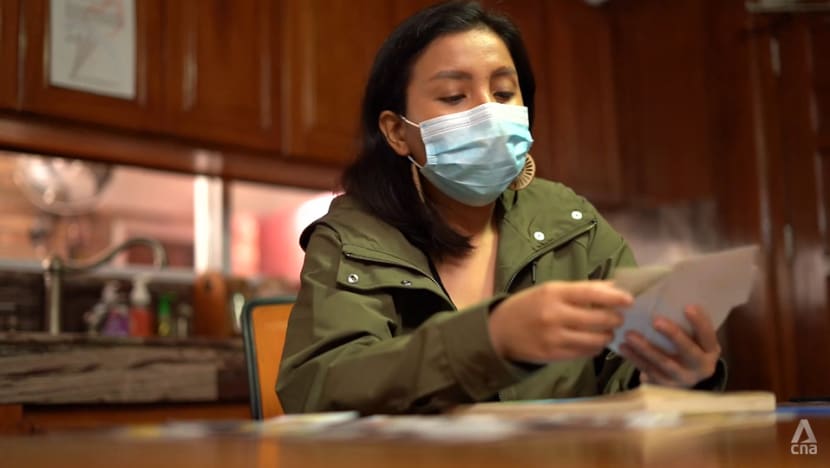
‘PRISO-NURSES’
To alleviate the staff shortages, the Philippine government took action last April when it barred Filipino nurses from working overseas.
Thousands were stuck in limbo, sparking an outcry and forcing the government to hold public Zoom meetings with healthcare and migrant worker unions to explain its position. Nurses even coined a term to refer to themselves: Priso-nurses.
Among those affected was Sharmaine Banog, who found herself unable to leave the Philippines after she returned in July from Saudi Arabia, where she had worked for four years. “I had so many offers (overseas),” she said.
Because of the deployment ban, all those offers went down the drain.”
Yet she was unwilling to fill any of the vacancies in her country. “My goal remains the same: To leave,” she said, citing having to pay for school for three siblings.
“For two years as a nurse, I didn’t receive the right compensation. … For a long time, we served the country, even though our pay always fell short.”
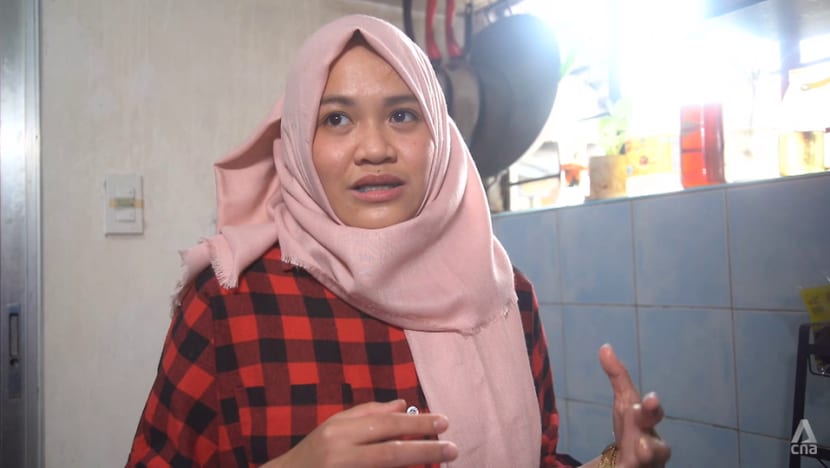
She is not alone. Ortiga pointed to nurses who “would rather leave the profession” than work in a Philippine hospital. “Some of them have actually started exploring jobs in call centres,” she said.
“Instead of just preventing those who’ve done their time from leaving, … the government should focus on trying to get the nurses who’ve left the profession to come back — and entice them with a regular salary, benefits, proper protections and hazard pay.”
To encourage more healthcare workers to serve on the front line, the government signed an administrative order to augment their income: For each day of work during the pandemic, the government would pay them an additional 500 pesos.
But eight months after the order was signed, 16,764 health workers had yet to receive their hazard pay. The reason? A lack of funding.
WATCH: Nurses in the Philippines — Underpaid and unprotected from COVID-19 while saving lives (4:30)
The government said the decentralisation of healthcare — where local government units have autonomy in deciding how much to pay nurses and how many to hire — was also to blame.
“We have no control over the spending of the local government units and how they give the hazard pay to their nurses,” said the Department of Health’s Tolentino.
LONG-STANDING GRIEVANCE
Pay is not a new issue for Philippine nurses: They have fought for higher wages for almost two decades.
Under the Nursing Act of 2002, nurses’ minimum base pay was pegged at salary grade 15, a mid-range grade in a 33-grade table used to determine government employees’ pay. This works out at 33,575 pesos a month.

But for 18 years, junior nurses entered public hospitals at salary grade 11, or 21,000 pesos a month. Again the reason is a lack of funding.
“It isn’t uncommon in the Philippines to have many unfunded laws,” said healthcare finance expert Carlo Panelo from the University of the Philippines, Manila.
“The Department of Health’s budget has been essentially flat since the late 1990s. And if the budget is flat, then there’s no other source of funding to pay for the salary increase.”
In 2019, the Supreme Court ruled that the Nursing Act must be carried out, and nurses should not be paid lower than salary grade 15. But the execution of the law sparked more furore.
WATCH: The full episode — Why does Philippines, top exporter of nurses, face a shortage at home? (46:29)
Senior nurses, who had expected a similar pay rise, found themselves demoted so their wages remained unchanged. For example, those holding a Nurse 2 position — with three to four years’ experience — were demoted to an entry-level Nurse 1 position.
“As much as we can, we want to give what’s due to our health workers,” said the Department of Health’s Tolentino. “We want to give them the right salary. But we weren’t given the budget for it.”
Her health ministry must cut the number of deployed nurses this year by 12 per cent, which means the contracts of 2,319 nurses will not be renewed.
“It sends a message that you’re not really important or you’re not valued,” said Ortiga. “For a lot of nurses, they felt that they were really looked down upon, by both hospitals and the government.”
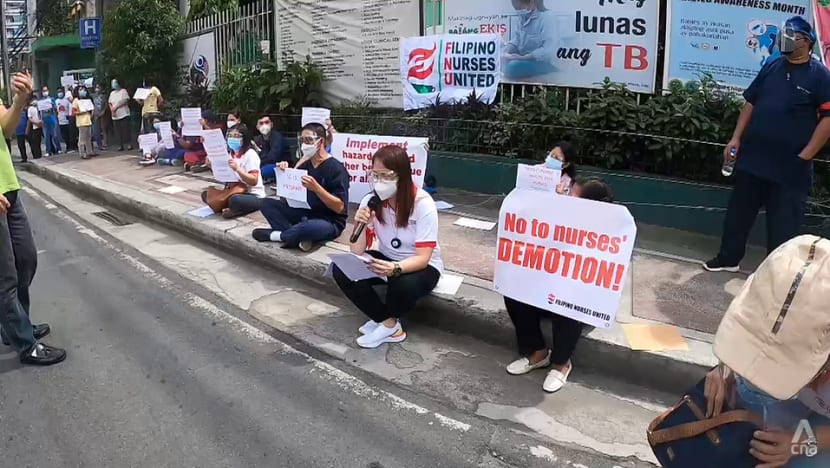
PUTTING FAMILY FIRST
After pressure from the nurses’ union, the ministry issued a memorandum in October temporarily suspending the demotion of nurses. But according to the union, many hospitals ignored the order. Last month, a lawmaker urged President Duterte to reverse the demotions.
One issue that has been resolved is the ban on nurses leaving the country. It was lifted in November, resulting in an exodus. From this year, there is an annual limit of 5,000 medical professionals allowed to leave.
This time, Budy wants to be one of them. “I need to think about my family and my children’s future,” she said. “I’ve reached the point where I’m doubting if I can send my children to school with my salary.”
She is getting her papers in order and has hopes of heading to the UK. “For years, I’ve had friends who’ve been pushing me to leave,” she said. “I wish I’d followed their advice earlier.”
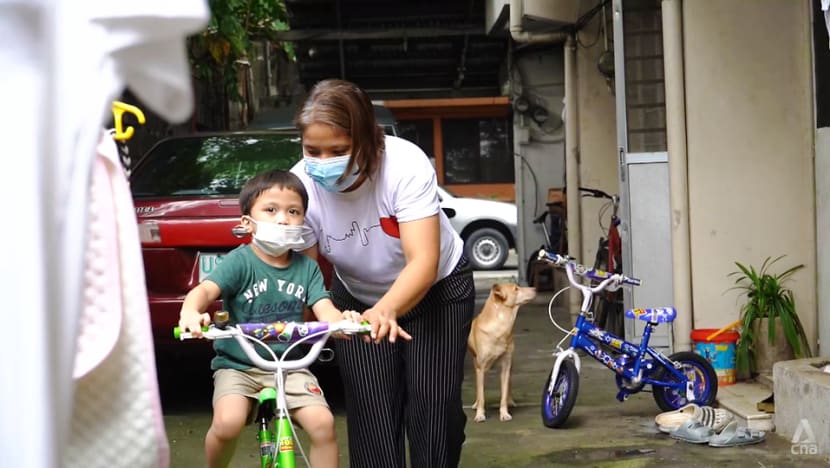
The demands nurses have made for years “suddenly have more salience”, noted Ortiga. “This is a time when we realise that these (are) professions we’ve undervalued (and) we really need them.
“But the question is, will (the government) institute long-term change, especially after the pandemic is over?”
Watch this episode of Undercover Asia here. The programme airs on Saturdays at 9 p.m.















